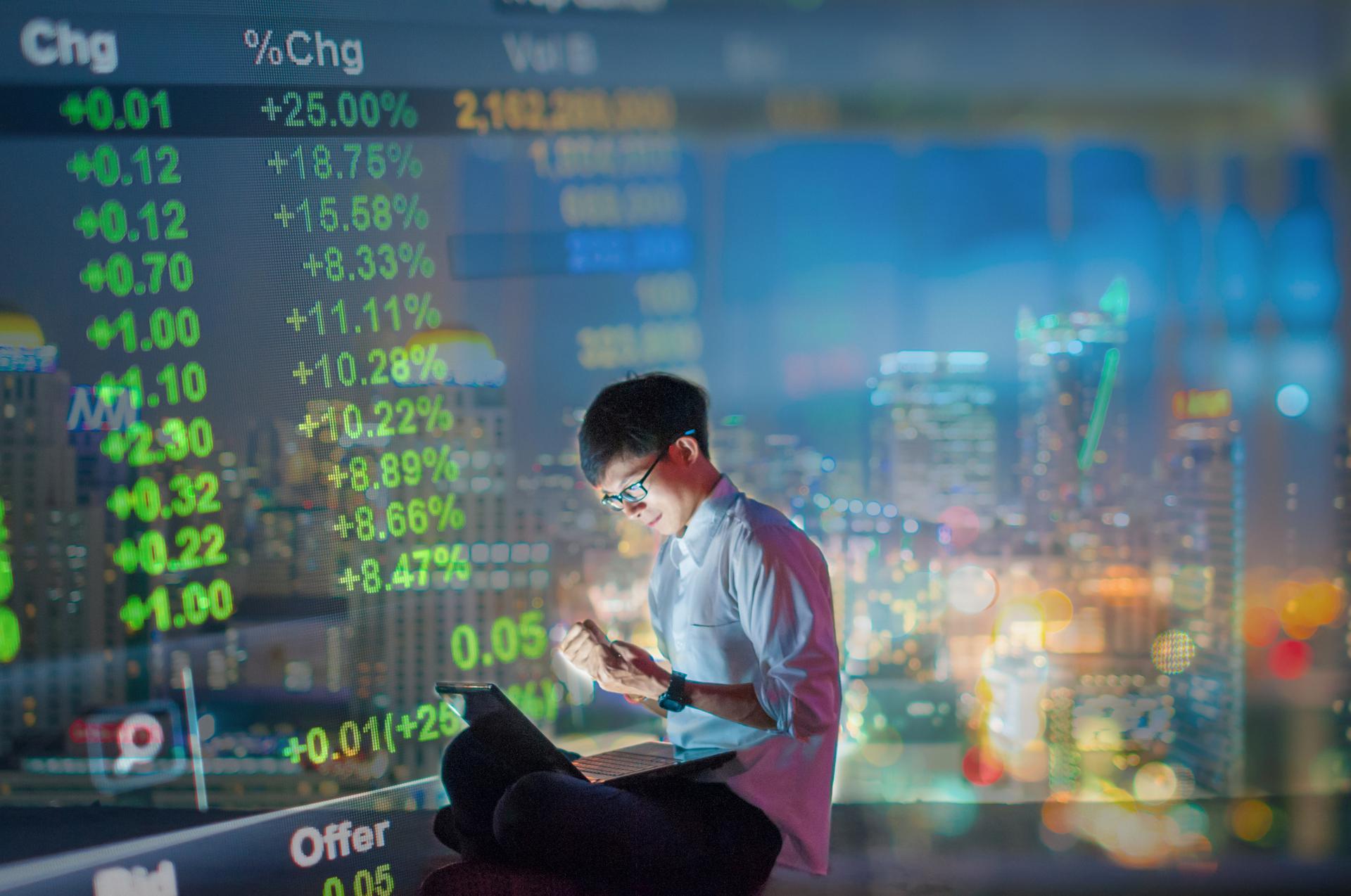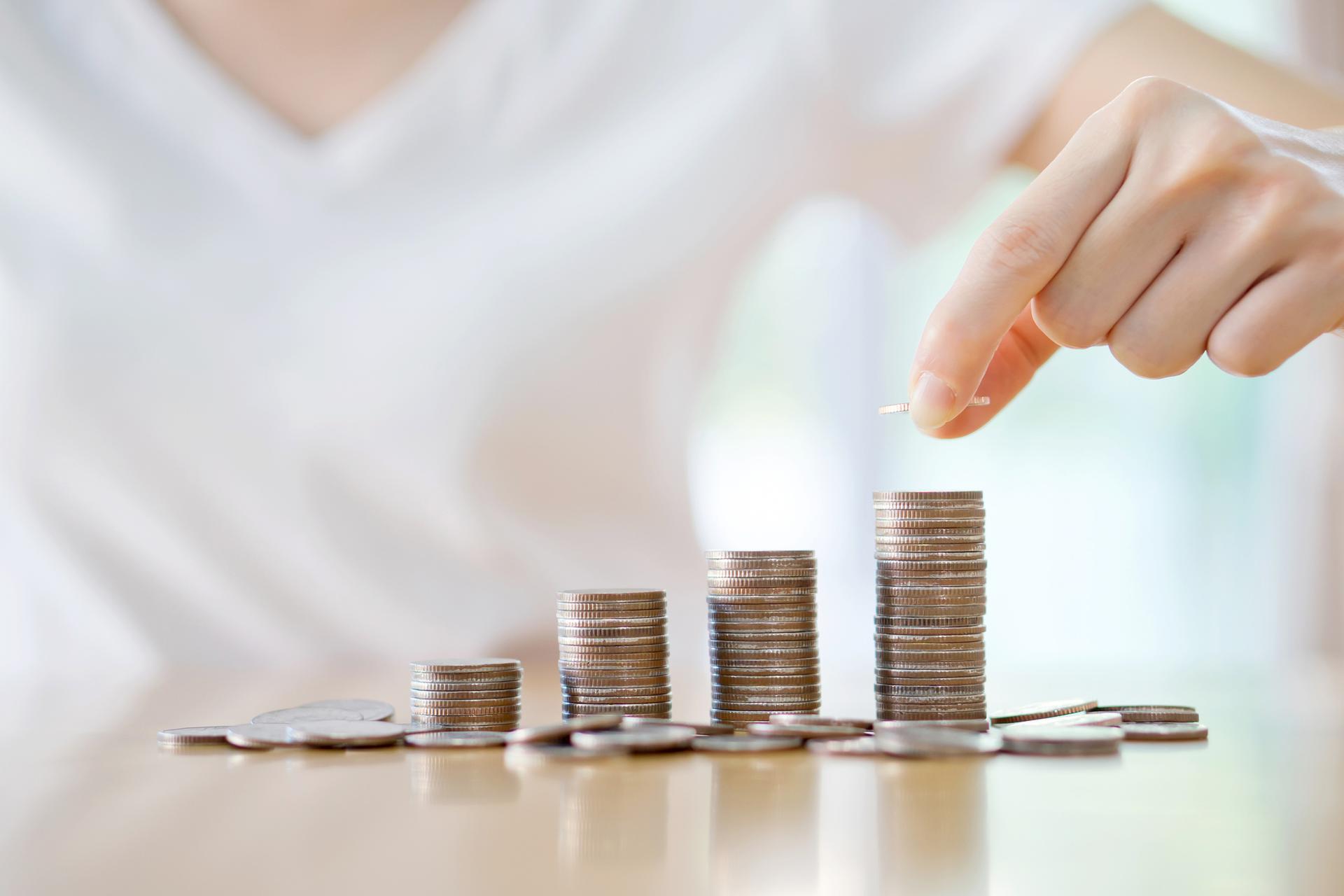|
2020 H2 Market Outlook - The worst could be over, but buckle up for continued volatility ahead 6 July 2020 
The first half of 2020 was an emotional roller coaster ride for most investors and in many aspects, it could have seriously challenged your investment philosophy. Whether you are a value investor trying to accumulate undervalued assets during selloffs, a momentum investor trying to ride the positive reopening sentiments and avoid FOMO (the fear of missing out), or simply a passive investor quietly and patiently buying into unit trusts on a regular basis regardless whether the market goes up or down - trusting that the Regular Savings Plan (RSP) and Value Averaging Plan (VAP) that you have put in place will work out over the long term.
The year kicked off on a strong note with major US indices such as the Dow Jones industrial Average, S&P 500, and Nasdaq 100 hitting fresh highs in February before the COVID-19 black swan event that caused markets to crash around 35% in the wake of a global pandemic and tumbling oil prices.
While markets have rebounded strongly since and seemed disconnected from the fundamentals, the worst is likely to be over. The question on investors’ minds is how this recovery will look and whether there will be another possibility of a double-dip or even a prolonged downturn?
Here we take a closer look at major markets across the globe:
Global outlook
The COVID-19 pandemic is a global health crisis without precedent in living memory. It has triggered the most severe economic recession in nearly a century and is causing enormous damage to people’s health, jobs and well-being.
The OECD projects that in 2020, worldwide GDP will decline by about 6% in a single-wave scenario, while a second-wave will result in a decline of 7.6%. The Euro area appears to be the worst-hit with Spain, France, Italy & United Kingdom being the most impacted. While Asia Pacific economies are likely to be impacted by a lesser degree with Korea, China, Indonesia at the least-impacted end of the spectrum.1
The lockdown measures brought in by most governments have succeeded in slowing the spread of the virus and in reducing the death toll but have also frozen business activity in many sectors, widened inequality, disrupted education and undermined confidence in the future.1
United States As states begin to reopen, COVID-19 cases are starting to creep up again with an average of around 40,000 new cases, with Florida, California, Arizona and Texas accounting for most of the increase.2
White House health adviser Dr Anthony Fauci warned that daily new case counts could surpass 100,000 new infections per day if the outbreak continues at its current pace and said that the US is “not in total control” of the pandemic. The World Health Organization also warned that some countries might have to reimplement severe restrictions such as lockdowns again to curb the spread of the virus, without specifically mentioning any country.3
Earlier in June, President Donald Trump echoed economic adviser Larry Kudlow and Treasury Secretary Steven Mnuchin that the United States could not shut down the economy again as the harm to the economy and spillover effects is too great.5 However, the Trump administration can’t do very much if states decided to tighten restrictions again as governors have lots of leeway to craft their own rules and guidelines regardless of what the federal government recommends.4
As the outbreak continues to worsen in several states, many that are about to reopen further including California, Florida and Texas began to pause or rollback reopening plans, including closing bars and limiting restaurant capacity.6
Despite the elevating risks of higher infection and the chance of another lockdown, financial markets have largely focused on the positivity of the reopening, with record jobs gain of 4.8 million in June, beating estimates of 2.9 million, as well as the falling unemployment rate of 11.1%, which is better than the 12.4% forecast. Leisure, hospitality and retail accounted for the biggest jump in jobs growth.7
Looking ahead, as states and sectors continue to sequentially reopen with restrictions lingering in sectors where distancing remains a concern, some industries such as passenger transport and hospitality will likely bear enduring scars from the COVID-19 crisis until a vaccine or an effective treatment for COVID-19 is available. Businesses in exposed sectors have also built up sizeable debts and some businesses will face liquidity and solvency concerns.1
Continued monetary and fiscal policies together with positive developments of vaccine and treatments would potentially allow the economy to recover robustly.
China
Following the steepest quarterly collapse on record in the first quarter, GDP will fall by around 3.7% in 2020 if there is a second virus outbreak later in the year and by 2.7% if a further outbreak is avoided, before rebounding in 2021.1
Following the swift action taken on the recent Xinfadi wholesale market outbreak, Beijing has set a clear example that China will ward off a new wave of infections – domestic or imported – through a prompt and refined epidemic control response.8
The COVID-19 outbreak disrupted economic activity around the country and many businesses remain shut even though lockdown measures have been lifted while tourism-related industries and firms heavily dependent on foreign demand are far from fully resuming activities. The outbreak also triggered an increase in precautionary saving and eroded consumer confidence, weakening short-term consumption prospects.1
Lockdowns in other countries may also disrupt value chains, hitting China’s parts and components producers and assemblers, although their reliance on imported inputs is decreasing.
On a positive note, government spending swiftly supported soaring public health material and equipment needs and covered the costs of COVID-19 treatment. This provided crucial relief, as out-of-pocket health costs are high in China, though reimbursement only applies for confirmed cases. R&D spending on medicine and vaccine development has also been stepped up.1
A faster-than-expected recovery from the virus crisis in Asian countries would boost not only exports, as these are the fastest-growing markets, but also employment, as export-driven firms account for nearly a quarter of total employment. IT and financial services also exhibited robust growth rates amid promotion of online payments and the emergence of new apps to meet demand for contactless services.1
Europe
Lockdown measures to suppress the COVID-19 pandemic have led to a major recession. If a second pandemic wave takes place later this year (the double-hit scenario), GDP is projected to contract sharply by 11.5% in 2020, and the unemployment rate will exceed 12% by end-2020, despite widespread use of short-time work schemes.1
If the virus remains contained after the end of lockdowns in spring 2020 (the single-hit scenario), GDP will fall by over 9% this year, the unemployment rate will reach double digits and average Maastricht public debt will exceed 100% of GDP by the end of the projection horizon.1
Substantial monetary and fiscal support will underpin the recovery once the lockdowns are lifted, but output and employment will still be much below pre-pandemic levels by end-2021, especially in the double-hit scenario, heightening risks of persistent scarring effects, including larger divergence across the area.1
Monetary and fiscal policies should remain supportive until at least end-2021, as any premature backtracking might derail the recovery. However, both national fiscal policies and the common monetary policy might become overburdened, especially in the case of a second outbreak. In this context, recent decisions to expand temporarily the role of the European Stability Mechanism or to help fund national short–term work schemes are positive initial steps. But more needs to be achieved.1
The recent proposal by the European Commission for a large European recovery plan, funded by common debt issuance and envisaging substantial grants to the most affected countries, is welcome. If swiftly adopted by member states in its current form, this recovery plan would provide a significant boost to European countries, notably to the most vulnerable ones. Eventually, these temporary supports should evolve into permanent common fiscal tools, such as a full-fledged European unemployment reinsurance scheme.1
Developing Asia
Developing Asia will suffer a sharp slowdown in 2020 as it struggles to contain COVID-19. Growth will be slow in most regional economies this year, with output in 9 of 46 ADB developing member countries expected to shrink. Aggregate economic growth will decelerate to 2.2% in 2020 but reaccelerate to 6.2% in 2021. By subregion, deceleration will be mildest in South Asia and steepest in the Pacific.9
South Asia will face a milder slowdown. Growth in South Asia will decelerate to 4.1% in 2020 and then recover to 6.0% in 2021, largely tracking the trend in the dominant Indian economy. GDP performance will remain strong in Bangladesh, which is forecasted to grow by 7.8% this year even as global demand pulls back.9 Southeast Asia will track the PRC and decelerate to 1.0% growth in 2020. All economies in the subregion will endure a growth slowdown in 2020 because of COVID-19 and a consequent global slump, especially given their strong trade and investment ties with a slowing PRC.
Growth in the closely intertwined economies of Malaysia and Singapore will plummet nearly to zero in 2020, with only Malaysia enjoying a strong rebound next year. Thailand, the second-largest economy in the subregion, will likely contract by 4.8% this year, continuing a steady slide in recent years. Cambodia and Indonesia will see sharp deceleration, so will the Philippines despite expansionary government policies, which should facilitate an upturn in 2021. Growth in Vietnam is forecast to decelerate significantly but remain uniquely robust in the subregion. With most economies weakening and global oil prices softening, subregional inflation should stay tame at just 1.9% in 2020 and 2.2% in 2021.9 Global Fixed Income Outlook
Amidst the unprecedented times, we've seen an unprecedented policy response. The Federal Reserve has expanded its balance sheet significantly with lending and liquidity measures of around $2 trillion, including bond purchasing facilities. And since the pandemic began, Congress has passed spending bills totaling nearly $3 trillion dollars – more than twice the amount passed after the 2008 financial crisis.10
On high yield defaults, PIMCO expects a high single-digit, potentially even low double-digit default rates. Ultimately, it could boil down to the labour markets. PIMCO also highlighted that if we can get people back to work relatively soon, those high yield default rates may stay in the single digits. But there’s always the risk that they could go higher if a vaccine takes longer to come online and social distancing policies have to stay in place longer.10
Overall, PIMCO expect to see a U-shaped recovery, rather than a V-shaped one, with both businesses and consumers continuing to exercise caution. Within the credit markets, PIMCO generally favours developed markets, particularly the U.S, over emerging markets and investment grade exposure versus high yield and bank loans. Over the past six or seven weeks PIMCO has seen consistent inflows and the money has been coming in from all over the world – mainly to investment grade U.S. credits.10
Gold
The shiny yellow metal has traditionally been known as a portfolio diversifier as well as a store of value during uncertain times – an appropriate asset class for the uncertain times that we live in today.
SAXO Bank expects gold to rally in the second half of 2020 to at least $1,800 an ounce, with fresh records in the coming years, citing a “political need” for higher inflation to support debt levels, a rising global savings glut, and raised geopolitical tensions ahead of the U.S presidential elections in November.11
Analysts at Goldman Sachs also expects gold prices to rally further, driven by debasement fears as well as a weakening U.S dollar due to massive monetary stimulus, forecasting the 3, 6 and 12 month forecast of gold prices to $1800/1900/2000 per ounce respectively.11
After digesting all the market impacts due to the current pandemic, we hope that as you watch intently on how the impact of the coronavirus would unfold in the following weeks and months along with how your portfolio value would fluctuate with each positive and negative development, don’t forget to stay calm and invested with dollarDEX. While nobody has a crystal ball and can tell for certain where the stock market will be in the next month, next quarter or next year. What is certain is that over the long run, staying invested is a proven way to beat inflation and it is also important not to forget your long-term investment goals. Eventually, the coronavirus situation will be a thing of the past and stock markets will rise again.
If you are not confident of timing the market, one good way is to invest in smaller tranches or set up a Regular Savings Plan (RSP) or Value Averaging Plan (VAP) on dollarDEX to smooth out the volatility and help you to focus on your long term goals while taking the emotions out of investing. At the same time, it is also important for you to rebalance your portfolio to ensure it is diversified avoiding any concentration risk in a particular sector or region.
YOU MAY ALSO LIKE THIS
Sources:
1. http://www.oecd.org/economic-outlook/june-2020/ 2. https://www.cnbc.com/2020/07/01/us-reports-second-highest-day-of-new-coronavirus-cases-as-arizona-california-set-new-records.html 3. https://www.cnbc.com/2020/07/01/who-warns-some-countries-may-have-to-reinstate-lockdowns-as-coronavirus-pandemic-accelerates.html? recirc=taboolainternal 4. https://www.marketwatch.com/story/the-us-cant-shut-down-the-economy-again-treasury-secretary-mnuchin-says-2020-06-11 5. https://www.reuters.com/article/us-health-coronavirus-usa-trump/trump-says-us-will-not-lock-down-again-amid-rising-coronavirus-cases-idUSKBN23P07Y 6. https://www.latimes.com/world-nation/story/2020-06-26/texas-orders-bars-shut-restaurants-scale-back-coronavirus-spike 7. https://www.cnbc.com/2020/07/02/jobs-report-june-2020.html 8. https://time.com/5862482/china-beijing-coronavirus-second-wave-covid19-xinfadi/ 9. https://www.adb.org/publications/asian-development-outlook-2020-innovation-asia 10. https://www.pimco.com.sg/en-sg/insights/viewpoints/finding-opportunities-in-public-and-private-credit-amid-an-uncertain-recovery 11. https://www.cnbc.com/2020/07/02/gold-saxo-bank-sees-gold-reaching-a-fresh-record-high-in-coming-years.html
Disclaimer
All information here is for GENERAL INFORMATION only and does not take into account the specific investment objectives, financial situation or needs of any specific person or groups of persons. Prospective investors are advised to read a fund prospectus carefully before applying for any shares/units in unit trusts. The value of the units and the income from them may fall as well as rise. Unit trusts are subject to investment risks, including the possible loss of the principal amount invested. Investors investing in funds denominated in non-local currencies should be aware of the risk of exchange rate fluctuations that may cause a loss of principal. Past performance is not indicative of future performance. dollarDEX is affiliated with Aviva but dollarDEX does not receive any preferential rates for Aviva products as a result of this relationship. Unit trusts are not bank deposits nor are they guaranteed or insured by dollarDEX. Some unit trusts may not be offered to citizens of certain countries such as United States. Information obtained from third party sources have not been verified and we do not represent or warrant its accuracy, correctness or completeness. We bear no responsibility or liability for any error, omission or inaccuracy or for any loss or damage suffered by you or a third party (including indirect, consequential or incidental damages) arising in any way from relying on this information.
This information does not constitute an offer or solicitation of an offer to buy or sell any shares/units.
Information is correct as of 06/07/2020.
|




